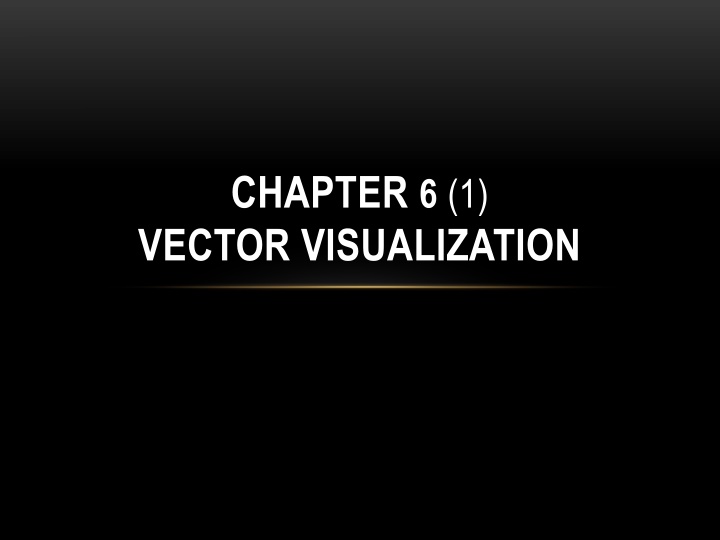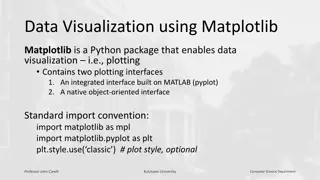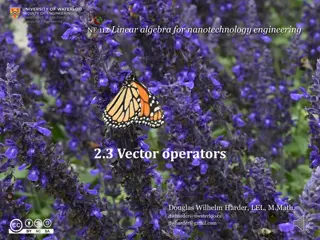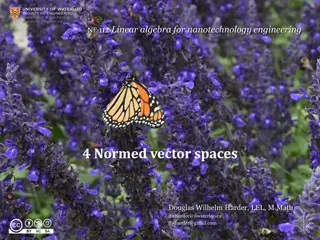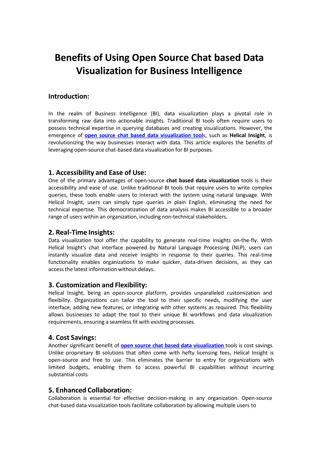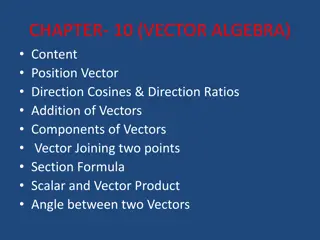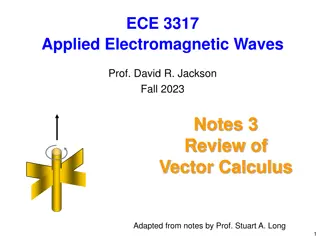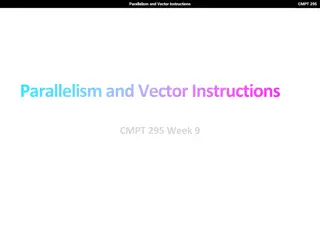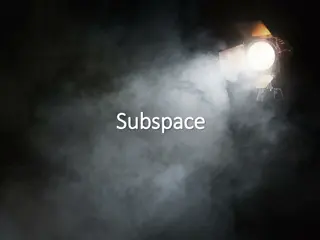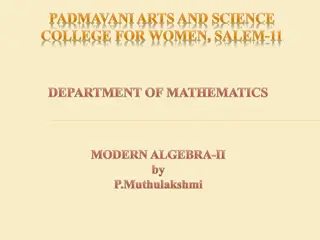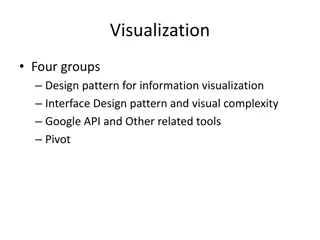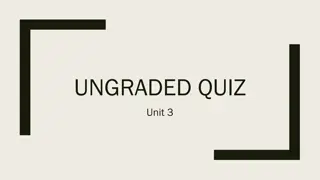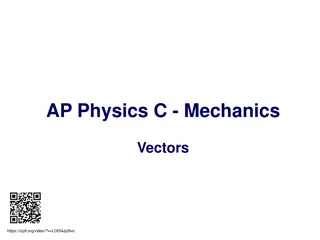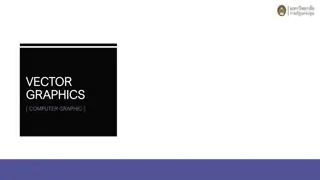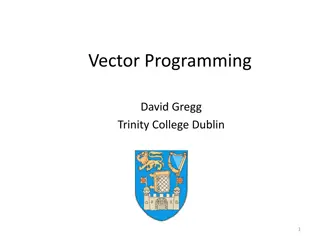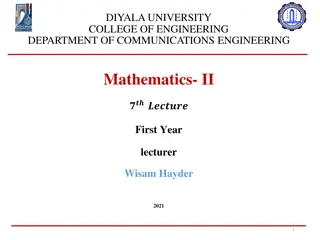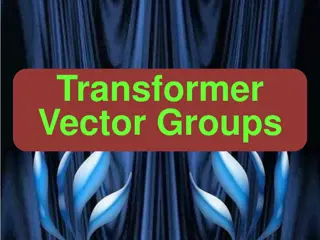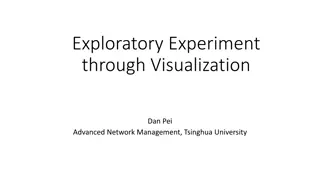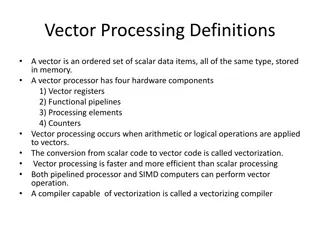Visualization Methods for Vector Datasets
Vector datasets are visualized through various techniques such as vector glyphs, color coding, displacement plots, stream objects, and texture-based visualization. This chapter explores mathematical operators, scalar visualization techniques, and strategies to simplify the representation of vector fields using examples and illustrations.
Uploaded on Feb 18, 2025 | 0 Views
Download Presentation

Please find below an Image/Link to download the presentation.
The content on the website is provided AS IS for your information and personal use only. It may not be sold, licensed, or shared on other websites without obtaining consent from the author.If you encounter any issues during the download, it is possible that the publisher has removed the file from their server.
You are allowed to download the files provided on this website for personal or commercial use, subject to the condition that they are used lawfully. All files are the property of their respective owners.
The content on the website is provided AS IS for your information and personal use only. It may not be sold, licensed, or shared on other websites without obtaining consent from the author.
E N D
Presentation Transcript
CHAPTER 6 (1) VECTOR VISUALIZATION
OUTLINE Vector datasets are samplings of vector fields over discrete spatial domains Visualizing Vector A number of the popular visualization methods for vector datasets Vector glyphs Vector color coding Displacement plots Stream objects Texture-based vector visualization The simplified representation of vector fields
OUTLINE Vector Visualization: Application: Computational Fluid Dynamics (CFD) 6.1 Mathematical operators to analyze vector fields 6.2 Vector glyphs 6.3 Scalar Visualization techniques to depict vector fields 6.4 Displacement plot technique 6.5 Stream objects 6.6 Use of textures 6.7 Strategies for simplified representation of vector datasets
6.1 DIVERGENCE ( ) AND VORTICITY ( ) The Divergence of v=(vx,vy,vz) is the scalar quantity Vorticity (curl or rotor of v) v y v x v z y v = + + x div z v z v x v z v y v y v x y y v = ( - , - , - ) x x rot z z
6.1 DIVERGENCE AND VORTICITY Fig 6.1. Divergence and curl in 2D. (a) Divergence construction. (b) Source point. (c) Sink point. (d) Rotor construction. (e) High-vorticity field. Source point: Positive; Spread Sink point: Negative; Sucked.
6.1 DIVERGENCE AND VORTICITY Fig 6.2 (a) Divergence of a 2D vector field (b) Absolute value of vorticity of a 2D vector field
6.1 DIVERGENCE AND VORTICITY Fig 6.3 Vorticity of a 2D fluid flow field. Note the alternation between vortices with opposite spinning directions. (Courtesy of I. Barosan, Eindhoven University, Netherlands.)
6.2 VECTOR GLYPHS Vector Glyphs Simplest, fastest, most popular technique for visualizing vector fields Associate a vector glyph, or vector icon, with every sample point of the vector dataset A sign conveys properties of the represented vector, such as direction, orientation, and magnitude Many variations of framework Lines (convey direction) 3D cone (convey direction + orientation) Arrow (convey direction + orientation)
6.2 VECTOR GLYPHS Figure 6.4. Hedgehog visualization of a 2D magnetohydrodynamic velocity field. (Data courtesy of Prof. Martin Rumpf, University of Bonn, Germany.)
6.2 VECTOR GLYPHS Figure 6.5. Different glyph types. (a) Cones. (b) Arrows.
6.2 VECTOR GLYPHS 6.2.1 VECTOR GLYPH EXAMPLES Trade-off The power of expression of glyph Number of attributes they can encode Minimal screen size The difference between scalar and vector visualization --- in sampling terms Subsampling problem Random sampling
6.2 VECTOR GLYPHS 6.2.1 VECTOR GLYPH EXAMPLES Figure 6.6. Visual interpolation of vector glyphs. (a) Small data variations are easily interpolated. (b) Large data variations create more problems.
6.2 VECTOR GLYPHS 6.2.1 VECTOR GLYPH EXAMPLES Figure 6.7. (a) Vector glyphs on a dataset regularly subsampled on a rotated sample grid. (b) Subsampling artifacts are alleviated by random sampling. Both visualization display 1200 glyphs.
6.2 VECTOR GLYPHS 6.2.1 VECTOR GLYPH EXAMPLES 3D glyph Occlusion problem Sparse sampling Draw the glyph transparently Monochrome: easier to interpret Figure 6.8. Glyph-based visualization of a 3D vector field. (Data courtesy of Prof. Martin Rumpf, University of Bonn, Germany.)
6.2 VECTOR GLYPHS 6.2.1 VECTOR GLYPH EXAMPLES Figure 6.9. Glyph-based vector visualization on a 3D velocity isosurface.
